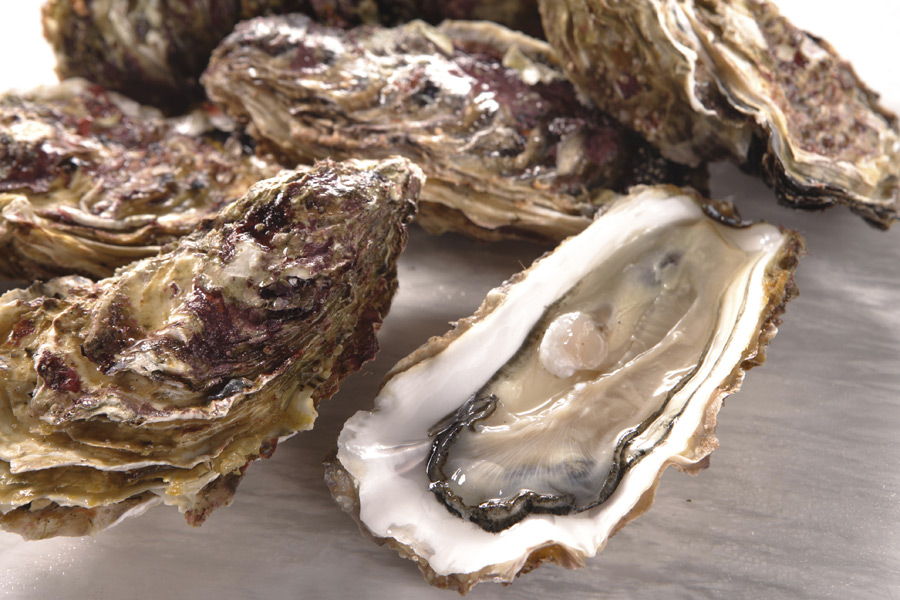Oysters: Culinary Treasure Key to Bays’ Health on the East End

Concerned citizens worried about the ecosystems of locals bays have all reached the same conclusion: The East End needs more oysters.
In order to turn the tide on the deterioration of water quality, grassroots efforts are underway at Shinnecock Bay, Moriches Bay and North Sea Harbor. Each of these water bodies has been adopted by a different nonprofit, and each nonprofit sees the essential role oysters will play.
Though oysters are often associated with fine dining and raw bars, marine biologists treasure oysters for another reason: their ability to remove an extraordinary amount of algae and nitrogen from bodies of water. While all filter feeding bivalves do the same, oysters are the true workhorses of the bays.
Aram Terchunian, the owner of the environmental services firm First Coastal in Westhampton, says that 100 years ago, oysters were more important to Manhattan’s economy than Wall Street. Oysters were plentiful then in New York’s waters, but in the ensuing years, due to overharvesting, pollution and other factors, the oyster population has collapsed.
With the loss of oysters, bays have lost much of their filtration systems. Stormwater runoff and leaching cesspools are putting nitrogen in the estuary and algae is growing at a faster pace than the remaining filter feeders, such as hard-shell clams, scallops and mussels, can consume it. And the clam population is also no where near what it was 50 years ago.
Terchunian is a member of the Moriches Bay Project, which got permission to grow 10,000 oysters in the bay. The oyster racks will be in the eastern end of the Bay, off the Westhampton Beach portion of Dune Road.
At North Sea Harbor, the Conscience Point Shellfish Hatchery aims to grow oysters to seed oyster reefs there and elsewhere on the East End. The hatchery is located on Southampton Historical Museum’s Conscience Point Historic Site, where settlers landed in 1640.
The hatchery is being operated by Sea Scout Ship 908, a division of the Boy Scouts of America, and others interested in restoring local waters. Josh Belury is both the skipper of Ship 908 and the director of the hatchery.
“Algal blooms are just running rampant,” Belury says. Algae have many negative effects on water bodies, such as preventing sunlight from reaching the bottom of bays and robbing waters of oxygen. No sunlight means no eelgrass beds—where clams grow—and no oxygen means mobile aquatic life flees and stationary animals die.
Three reefs of 1 million oysters each will filter the entire volume of water in North Sea Harbor every 24 hours, according to Belury. And they only need to be 100 feet by 10 feet each. The oysters will work all day and through the night, leaving the harbor crystal clear when the sun rises. Then algae will grow back under the sunlight, beginning the cycle again. The oyster reefs will also have the effect of absorbing the shock of waves, before they hit land and causes erosion, especially during storms, Belury says.
The largest organization aiming to replenish the oyster population is the Shinnecock Bay Restoration Program, which has the backing of the Stony Brook Southampton School of Marine and Atmospheric Sciences. Created in 2012, it aims to stop algal blooms known as brown tides and rust tides from occurring by jump-starting shellfish reproduction. Clam and oyster sanctuaries, at locations in the bay where conditions are best suited for growth, will be established with high densities of the bivalves. The program got its start thanks to $3 million in contributions from the Laurie Landeau Foundation and the Simons Foundation.
The Shinnecock Bay Restoration Program, along with Cornell Cooperative Extension, helps anyone with access to the bay to became an oyster gardener. The SPAT program provides cages, 1,000 seed oysters plus instruction and workshops. One oyster garden can contribute to the filtration of 50,000 gallons of water daily. More information is available at shinnecockbay.org.



